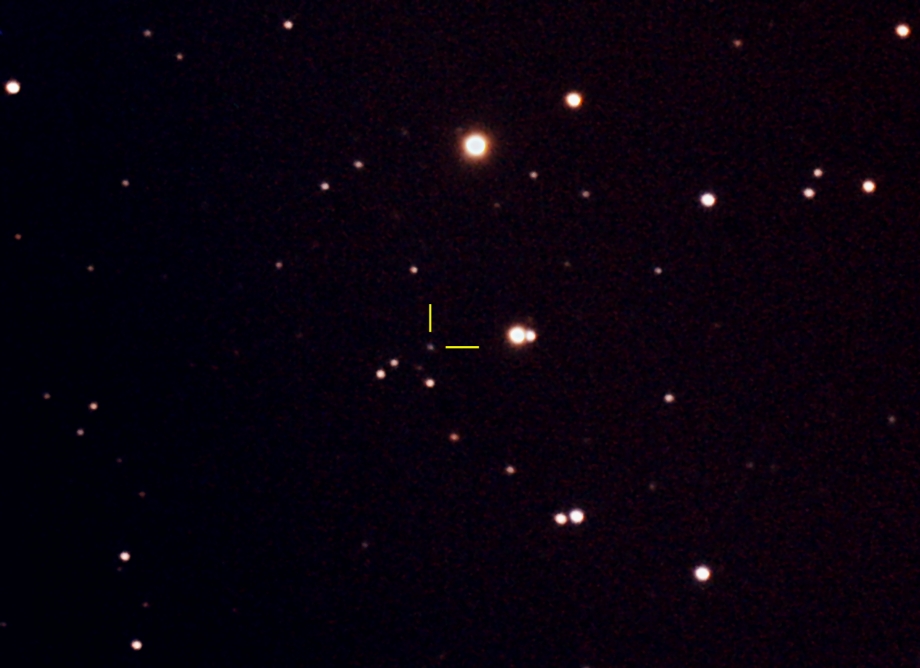 |
Supernova in Aries - February 2006
 |
Copyright 2006 Hap Griffin
Rare is it to have the opportunity to take a photograph of a supernova...rarer still to catch one only a few days into its earliest stages! The small speck of light highlighted by the pointers in this photograph is in reality one of the most violent events in the universe. It is a star blowing up in a titanic explosion with an outpouring of energy so vast that for a short period of time the star outshines its entire galaxy. In this case, the star is located in a distant galaxy 440 million light years away that would otherwise not be visible at all in most amateur telescopes. The photons that registered on the digital imaging chip in my camera to make this photograph were emitted by the colossal event nearly half a billion years ago...long before dinosaurs roamed our planet. Although we are only just now seeing this event because of its great distance and the limited speed of light, it actually occurred when the earth was going through the Paleozoic Era...when life was first emerging from the oceans. The distances involved in intergalactic space allows us to see back in time...the farther we look, the farther back in time we see.
This supernova was discovered as a Gamma Ray Burst first detected by satellite on February 18th, 2006. Once the precise coordinates were found for the GRB, optical telescopes were turned on the spot. Photographs were taken to compare to older photographs of the same area. In the precise location of the GRB there now appears a "new" star...much brighter than the combined light of all the stars in its home galaxy just a week earlier.
Date/Location:
February 26, 2006 Griffin/Hunter
Observatory Bethune, SC
Instrument: Canon 350D Digital SLR (modified) through 10"
Meade RCX-400
Focal Ratio: f8
Guiding: Auto via SBIG ST237 through Orion ED80
Conditions: Visually clear and cold
Weather: 32 F
Exposure: 20 minutes total (4 x 5 minutes @ ISO 800)
Filters: Baader UV/IR block
Processing: Focused and captured with DSLRFocus.
RAW to TIFF conversion, Digital Development,
Richardson-Lucy deconvolution, resizing and JPEG conversion in ImagesPlus.
Notation in Photoshop
6. Noise reduction in Neat Image.